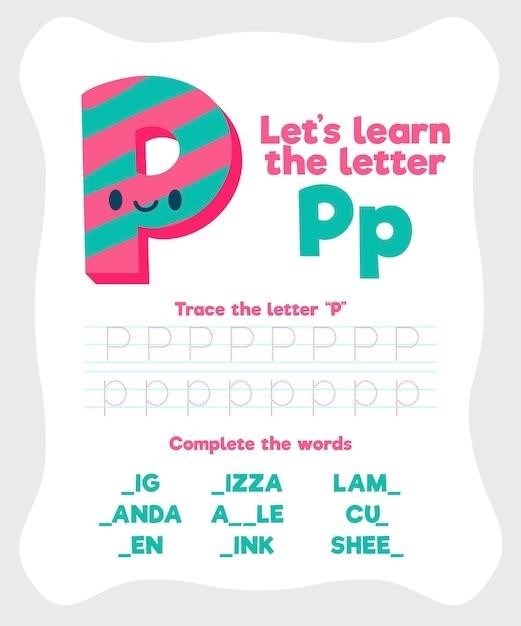Editing PDFs⁚ Cut and Paste Techniques

Editing PDFs is a common task for many users‚ especially those who need to modify documents for work‚ school‚ or personal projects. Cutting and pasting text within a PDF is a fundamental skill that can be easily mastered with the right tools and techniques. This guide will explore the process of editing PDFs‚ focusing on the essential aspects of selecting‚ copying‚ and pasting text‚ as well as advanced techniques for manipulating images and using OCR (Optical Character Recognition).
Introduction
PDF (Portable Document Format) files have become ubiquitous‚ offering a standardized format for sharing and preserving documents across different platforms. While PDF files are known for their stability and readability‚ they can sometimes require modifications‚ such as adding text‚ images‚ or annotations. Editing PDF files can seem daunting‚ but with the right tools and techniques‚ it can be a straightforward process; This guide aims to provide a comprehensive understanding of PDF editing‚ focusing on the essential skill of cutting and pasting text within these documents.
Understanding PDF Editing
PDF editing involves making changes to the content‚ layout‚ or appearance of a PDF document. This can range from simple tasks like correcting typos or adding text to more complex operations like manipulating images‚ adding annotations‚ or even converting scanned documents into editable text. The ability to edit PDFs effectively is essential for various purposes‚ including⁚
- Updating Documents⁚ Correcting errors‚ adding new information‚ or revising content in existing PDFs.
- Improving Accessibility⁚ Making PDFs more user-friendly by adding bookmarks‚ annotations‚ or alternative text for images.
- Reformatting Documents⁚ Adjusting page layout‚ margins‚ fonts‚ or image placement to enhance readability or meet specific requirements.
- Creating New Documents⁚ Using PDF editors to create new documents from scratch‚ especially when specific formatting or layout is required.
Methods for Editing PDFs
The world of PDF editing offers a variety of methods‚ each with its own strengths and weaknesses. Choosing the right method depends on factors like the complexity of your editing tasks‚ your budget‚ and your level of technical expertise. Here are some of the most popular approaches⁚
- Online PDF Editors⁚ These web-based tools provide a convenient and often free option for basic editing tasks. They typically allow you to add text‚ images‚ and annotations‚ as well as merge or split PDFs. Examples include PDFzorro‚ DocHub‚ and Smallpdf.
- Desktop Software⁚ For more advanced editing capabilities‚ dedicated desktop software offers a wider range of features and greater control. These applications are often more expensive but provide greater customization options and support for complex editing tasks.
- Adobe Acrobat⁚ The industry-standard PDF editor‚ Adobe Acrobat‚ offers the most comprehensive features for editing‚ creating‚ and managing PDFs. It provides advanced tools for text editing‚ image manipulation‚ form creation‚ and more‚ but it comes at a premium price.
Online PDF Editors
Online PDF editors are a popular choice for users who need to perform basic editing tasks without installing any software. These web-based tools are often free or offer a freemium model with limited features. They typically allow you to add text‚ images‚ and annotations to your PDFs‚ as well as merge or split documents. Some online editors even support basic text editing features like copy‚ paste‚ and delete. However‚ online editors might not provide the same level of control and advanced features as desktop software or Adobe Acrobat. Examples of popular online PDF editors include PDFzorro‚ DocHub‚ Smallpdf‚ and Sejda.
Desktop Software
Desktop PDF editing software offers a wider range of features and more advanced functionalities compared to online editors. These programs are typically downloaded and installed on your computer‚ providing offline access to editing tools. Desktop PDF editors often come with a user-friendly interface‚ making them suitable for both beginners and experienced users. They typically offer features like text editing‚ image manipulation‚ form filling‚ and security settings. Some popular desktop PDF editors include PDFelement‚ Nitro Pro‚ Foxit PhantomPDF‚ and Wondershare PDFelement. While some desktop PDF editors are free‚ most offer a paid subscription or one-time purchase for access to all their features.
Adobe Acrobat
Adobe Acrobat is the industry standard for PDF editing‚ known for its comprehensive set of tools and its ability to handle complex PDF documents. Adobe Acrobat Pro DC‚ the professional version‚ offers advanced editing features‚ including the ability to edit text‚ images‚ and objects within PDFs. It allows users to add‚ delete‚ and modify text‚ manipulate images‚ and even create and edit forms. Acrobat Pro DC also includes features like OCR (Optical Character Recognition)‚ which converts scanned documents into editable text‚ and PDF Portfolio creation‚ which allows users to combine multiple files into a single‚ interactive PDF document. While Adobe Acrobat Pro DC is a powerful tool‚ it comes at a cost‚ making it a more expensive option compared to other PDF editors.
Cutting and Pasting Text
Cutting and pasting text within a PDF is a fundamental skill for many users. It allows for quick and easy modifications to existing content. The process involves selecting the desired text‚ copying it to the clipboard‚ and then pasting it into the desired location within the PDF or another document. Most PDF editors provide intuitive methods for selecting text‚ often using a mouse or touchpad to highlight the desired text. Once selected‚ users can copy the text to the clipboard using keyboard shortcuts like Ctrl+C or Cmd+C‚ or by right-clicking and selecting “Copy” from the context menu. Similarly‚ pasting the text is done using Ctrl+V or Cmd+V‚ or by right-clicking and selecting “Paste”.
Selecting Text
Selecting text in a PDF is the first step in cutting and pasting. Most PDF editors offer various methods for text selection. A common method involves using the mouse or touchpad to click and drag over the desired text. This highlights the selected text‚ making it ready for copying or cutting. Some PDF editors may also provide a selection tool that allows for more precise text selection‚ especially in complex layouts or when dealing with multiple columns of text. Another method involves using the keyboard to select text. Holding down the Shift key while using the arrow keys allows for the selection of individual characters or words. For larger selections‚ users can hold down the Shift key and click on the beginning and end points of the desired text.
Copying and Pasting
Once you have selected the desired text‚ you can copy or cut it. Copying duplicates the selected text‚ leaving the original text intact. Cutting removes the selected text from the PDF‚ allowing you to paste it elsewhere. To copy text‚ you can right-click on the selected text and choose “Copy” or use the keyboard shortcut Ctrl+C (Windows) or Command+C (Mac). To cut text‚ right-click on the selected text and choose “Cut” or use the keyboard shortcut Ctrl+X (Windows) or Command+X (Mac). After copying or cutting the text‚ you can paste it into another location within the PDF or into a different document. To paste the copied or cut text‚ right-click on the desired location and choose “Paste” or use the keyboard shortcut Ctrl+V (Windows) or Command+V (Mac).
Using Keyboard Shortcuts
Keyboard shortcuts provide a faster and more efficient way to copy‚ cut‚ and paste text in a PDF. These shortcuts are universally recognized across various operating systems and applications‚ making them a valuable tool for streamlining your editing process. The most common keyboard shortcut for copying text is Ctrl+C (Windows) or Command+C (Mac). To cut text‚ use Ctrl+X (Windows) or Command+X (Mac). Pasting copied or cut text is done using Ctrl+V (Windows) or Command+V (Mac). These shortcuts save you time and clicks‚ allowing you to navigate and edit your PDF more efficiently. Familiarizing yourself with these shortcuts will significantly enhance your PDF editing experience.
Advanced Editing Techniques
Beyond basic text manipulation‚ advanced editing techniques allow you to make more complex changes to your PDFs. These techniques can enhance the overall quality and functionality of your document. Image manipulation enables you to resize‚ rotate‚ or crop images within the PDF‚ ensuring they fit seamlessly within the document’s layout. OCR (Optical Character Recognition) is a powerful tool for converting scanned images or PDFs into editable text. This allows you to modify the text content of images‚ making them searchable and easily modifiable. These advanced techniques provide users with greater control over their PDFs‚ enabling them to create professional-looking documents that meet their specific needs.
Image Manipulation
Image manipulation within PDFs allows users to adjust and enhance the visual elements of their documents. Most PDF editing software provides tools for resizing‚ rotating‚ and cropping images. Resizing enables you to scale images to fit the desired dimensions within the PDF page. Rotating allows you to adjust the image’s orientation‚ ensuring it aligns correctly with the document’s layout. Cropping provides the ability to remove unwanted portions of the image‚ focusing on the essential content. These image manipulation features empower users to refine the visual presentation of their PDFs‚ achieving a polished and professional look.
OCR (Optical Character Recognition)
OCR‚ or Optical Character Recognition‚ is a powerful tool that transforms scanned images into editable text. When dealing with PDFs created from scanned documents or images‚ OCR allows you to convert the image-based text into machine-readable characters. This conversion enables you to select‚ copy‚ edit‚ and paste the text within the PDF‚ just like any other digital document. OCR is particularly valuable for editing older documents that were originally created as physical paper copies. It bridges the gap between the physical and digital world‚ making these documents accessible and editable for modern workflows. By leveraging OCR‚ users can unlock the potential of previously inaccessible text data‚ enhancing efficiency and productivity.
Tips for Efficient Editing
Efficiency is key when editing PDFs. Here are some tips to streamline your workflow⁚
- Use Layers⁚ If you’re working with a complex PDF‚ consider using layers to organize your edits. This allows you to toggle different elements on and off‚ making it easier to focus on specific areas.
- Save and Export Regularly⁚ It’s a good practice to save your edited PDF frequently to avoid losing your work. When you’re done‚ export the PDF in the format you need‚ ensuring compatibility with your intended recipients.
- Utilize Keyboard Shortcuts⁚ Familiarize yourself with keyboard shortcuts for copying‚ pasting‚ and other editing functions. This can significantly speed up your editing process‚ saving time and effort.

These tips‚ along with the techniques discussed throughout this guide‚ will empower you to effectively edit PDFs and manage your documents with increased efficiency.
Using Layers
Layers are a powerful feature in PDF editing software that allows you to organize and manage different elements of your document. By separating content into layers‚ you can easily edit specific elements without affecting others. For instance‚ you might create a layer for text‚ another for images‚ and a third for annotations. This organization is particularly helpful when working with complex PDFs that contain multiple elements.
To use layers effectively‚ you need to understand how to create‚ manage‚ and manipulate them within your chosen PDF editing software. Most software provides intuitive tools for creating and toggling layers‚ allowing you to control the visibility of specific elements. By leveraging layers‚ you can streamline your editing process‚ making it easier to focus on specific areas of your PDF without disrupting the rest of the document.
Saving and Exporting
Once you have finished editing your PDF‚ it’s crucial to save your changes and export the document in the desired format. Most PDF editing software allows you to save your edited file in both PDF and other formats‚ such as Word (.doc or .docx)‚ images (JPEG‚ PNG)‚ or even plain text. When saving as a PDF‚ you can often choose from different compression levels and security settings‚ allowing you to optimize the file size and protect your content.
Before exporting your PDF‚ it’s essential to review your changes and ensure that everything is as you intended. Double-check the formatting‚ layout‚ and content to avoid any unintended errors. Consider using preview modes to see how the final document will look before saving and exporting. By carefully saving and exporting your edited PDF‚ you can ensure that your changes are preserved and that the document can be easily shared or used for its intended purpose;


















